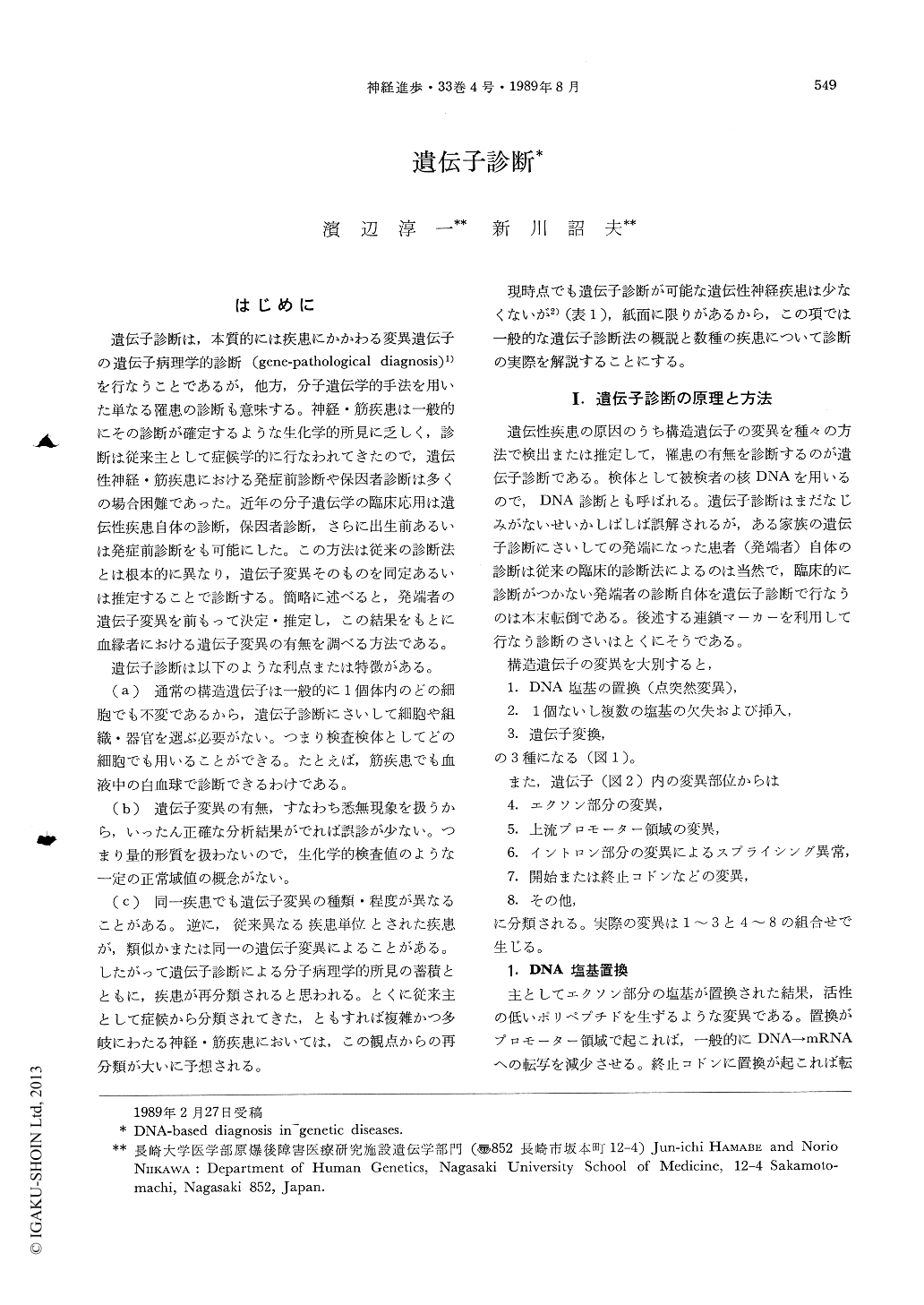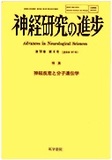Japanese
English
- 有料閲覧
- Abstract 文献概要
- 1ページ目 Look Inside
はじめに
遺伝子診断は,本質的には疾患にかかわる変異遣伝子の遺伝子病理学的診断(gene-pathological diagnosis)1)を行なうことであるが,他方,分子遺伝学的手法を用いた単なる罹患の診断も意味する。神経・筋疾患は一般的にその診断が確定するような生化学的所見に乏しく,診断は従来主として症候学的に行なわれてきたので,遺伝性神経・筋疾患における発症前診断や保因老診断は多くの場合困難であった。近年の分子遺伝学の臨床応用は遺伝性疾患自体の診断,保因者診断,さらに出生前あるいは発症前診断をも可能にした。この方法は従来の診断法とは根本的に異なり,遺伝子変異そのものを同定あるいは推定することで診断する。簡略に述べると,発端者の遺伝子変異を前もって決定・推定し,この結果をもとに血縁者における遣伝子変異の有無を調べる方法である。
遣伝子診断は以下のような利点または特徴がある。(a)通常の構造遺伝子は一般的に1個体内のどの細胞でも不変であるから,遺伝子診断にさいして細胞や組織・器官を選ぶ必要がない。つまり検査検体としてどの細胞でも用いることができる。たとえば,筋疾患でも血液中の白血球で診断できるわけである。
Diagnostic methods with molecular-genetic techniques available now are reviewed. The methods reviewed included (1) the direct sequencing of a mutant allele of a gene, (2) detection of a mutation-related restriction site, (3) detection of a point mutation using an oligonucleotide as a hybridization probe, (4) detection of a mutation with mutation-linked DNA polymorphisms (RFLPs), (5) detection of a base substitution with the DNA/RNA mismatch method, (6) detection of gene deletion/or insertion with the Southern blotting technique, and (7) detection of large-sized gene rearrangement with a pulsed field gradient gel electrophoresis. Several example of cases of genetic neuromuscular disorders who were diagnosed with these techniques are presented. Lastly, the methods for prenatal diagnosis of the neuromuscular disorders with special reference to their merits and drawbacks are reviewed.

Copyright © 1989, Igaku-Shoin Ltd. All rights reserved.


